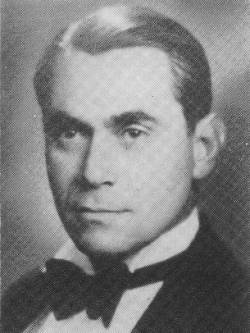- Author
- A.N. Other and NHSA Webmaster
- Subjects
- Biographies and personal histories, Naval Intelligence, Obituaries
- Tags
-
- RAN Ships
- HMAS Albatross (Shore Establishment), HMAS Anzac III, HMAS Shoalhaven, HMAS Napier, HMAS Sydney III, HMAS Tobruk II
- Publication
- March 1997 edition of the Naval Historical Review (all rights reserved)

On 25 November 1996, 55 years to the day of the sinking of HMS Barham, in which he was serving and when 862 of his shipmates lost their lives, Captain Ian McDonald died at his home in Noosa, after a long illness. He is survived by his wife Nan, and two brothers, Rear Admiral Neil McDonald RAN (Rtd.), and Dr Hugh McDonald, D.S.C. who also served in the RAN (1936-1946).
Admired and respected as `The Black Prince’ during his thirty year naval career, Ian served in six battle-ships, four cruisers and eight destroyers and was Captain of the first Australian Frigate Squadron in HMAS Shoalhaven, the first Australian ship into the Korean war zone. He later became Captain of the destroyers HMAS Tobruk and HMAS Anzac and retired from the Navy in 1958 from his last appointment as Director of Naval Intelligence.
He entered the RAN College at age 14, where he gained his colours for rugby, cricket, hockey, rowing and athletics and was twice the winner of the Governor-General’s Cup (1931-1932*). He became Chief Cadet Captain and on Passing Out he was first in all three groups of subjects, English-French-History, Engineering-Seamanship Navigation, and Mathematics-Physics-Chemistry, in addition to being awarded the Kind’s Medal**.
He became a midshipman in 1933, sub-lieutenant in 1936, Lieutenant in 1937, acting Lieutenant Commander in 1944 and Lieutenant-Commander in 1945. He sub-specialised in communications, and in 1939 was seconded to the Royal Navy as Flag-Lieutenant to the Flag Officer, Northern Patrol, before proceeding to the Mediterranean Fleet in 1940 as Flag-Lieutenant to Admiral Pridham-Wipple. He served with the Admiral until Barham was sunk. Miraculously, both survived and were rescued together.
On returning to Australia in 1942, he served in shore stations, including O.C. Signal School, Flinders Naval Depot, before returning to sea in 1944 as Flotilla Communications Officer in HMAS Napier in the British East Indies Fleet.
At the conclusion of hostilities with Japan, he was still in Napier which was then part of the British Pacific Fleet.
After WWII he spent two years on exchange duties in the Royal Navy, thereafter joining the light fleet carrier HMAS Sydney on commissioning. He was promoted to Commander, and later commanded HMA ships Shoalhaven, Tobruk and Anzac. He served as Executive Officer of HMAS Albatross before being promoted to Acting Captain and becoming Director of Naval Intelligence. He was granted the Honorary rank of Captain on retirement.
*Awarded annually for the best all-round sporting performance.
**Awarded annually to the cadet considered most deserving of the honour for gentlemanly bearing, character, good influence among his fellows, and officer-like qualities




